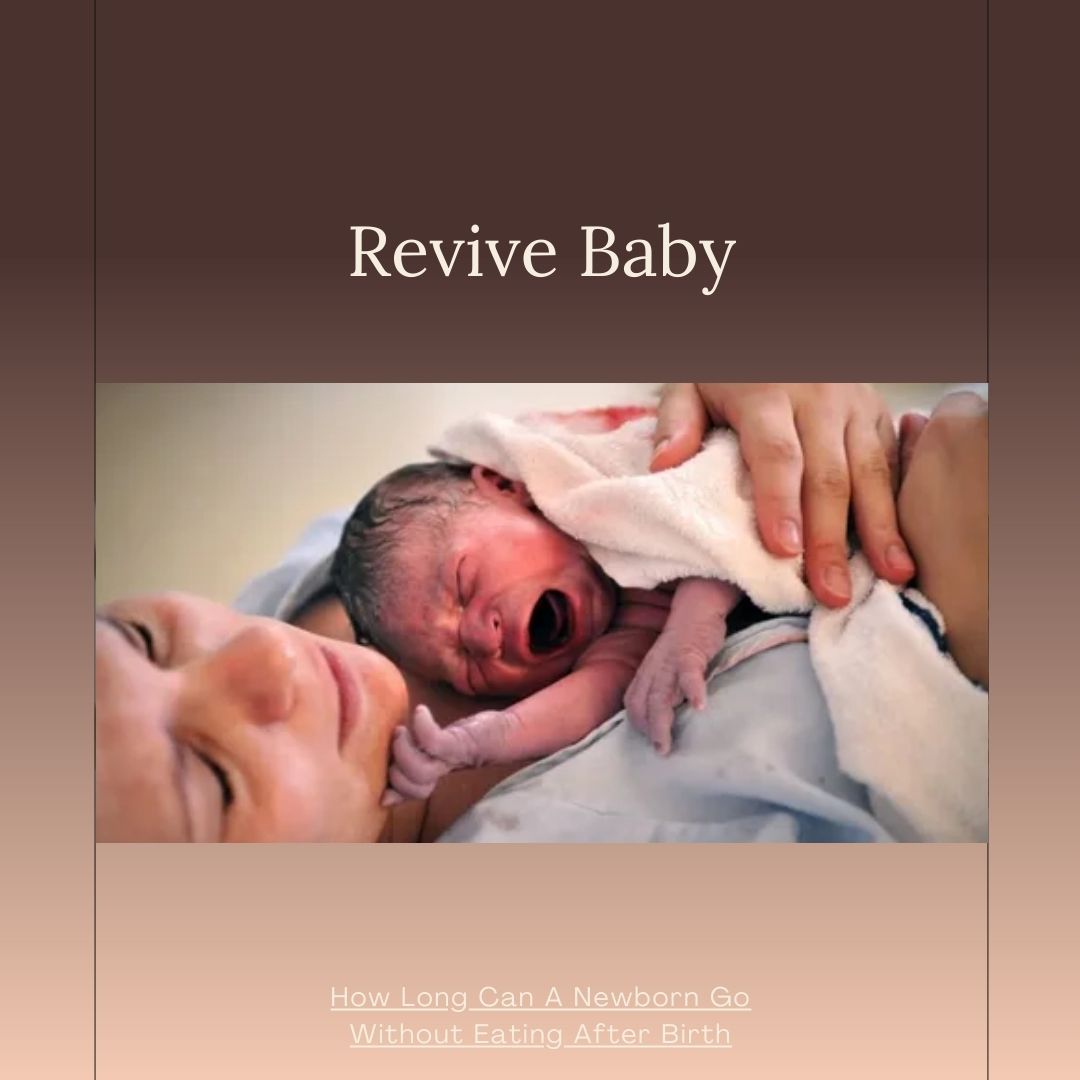This article addresses a common concern among parents: how long can a newborn go without eating after birth? We will explore newborn feeding patterns, the significance of colostrum, and the typical time frame between feedings. By understanding hunger cues, feeding guidelines, and when to seek medical advice, parents can ensure their newborn receives the necessary nourishment for optimal growth and well-being. While this article provides valuable insights, consulting healthcare professionals is always recommended for personalized guidance.
Understanding Newborn Feeding Patterns
Exploring the newborn's instinct to feed: Newborns are born with an instinct to seek nourishment. This instinct is driven by their biological need for sustenance and growth. They are often equipped with reflexes that facilitate feeding, such as rooting and sucking reflexes, which help them find the breast or bottle and begin feeding.
Frequency of feedings during the first few days: In the first few days after birth, newborns typically have small stomach capacities, and their feeding patterns can differ from those of older infants. They often require more frequent feedings, with intervals ranging from 1 to 3 hours. This frequent feeding helps provide them with the essential nutrients and hydration they need during this crucial stage.
Recognizing hunger cues in newborns: Newborns communicate their hunger through various cues. These cues may include increased alertness, mouthing or sucking motions, rooting (turning the head toward stimuli near the mouth), and putting their hands to their mouth. Crying is a late hunger cue and indicates a more urgent need for feeding. Recognizing these hunger cues allows parents to respond promptly and ensure their newborns are fed when needed.
Colostrum - The First Nutritious Liquid
Colostrum is the thick, yellowish fluid the mother's breasts produce in the initial days after childbirth. It is often called "liquid gold" due to its remarkable nutritional and immunological properties. Colostrum serves as the newborn's first source of nourishment, providing essential nutrients and antibodies that help protect the baby against infections and support its immune system.
Benefits of Colostrum for Newborns
Colostrum offers numerous benefits to newborns. It is highly concentrated with proteins, vitamins, minerals, and antibodies that help boost the baby's immunity. The antibodies present in colostrum provide passive immunity, offering protection against common illnesses. Additionally, colostrum helps develop the newborn's digestive system and aids in the passage of meconium (the baby's first stool).
How colostrum meets the newborn's nutritional needs initially?
Newborns have small stomach capacities in the early days, and colostrum is perfectly designed to meet their nutritional needs. It is low in volume but high in concentrated nutrients, making it easily digestible for the newborn's immature digestive system. The small amounts of colostrum provided during frequent feedings ensure the baby receives adequate nutrition and hydration while their mother's milk supply gradually increases.
Colostrum, with its unique composition and benefits, plays a crucial role.

Time Frame for Newborns Without Feeding
Immediate post-birth: transitioning and establishing breastfeeding
In the immediate post-birth period, it is important to initiate early breastfeeding. Skin-to-skin contact and initiating breastfeeding within the first hour after birth can help establish a strong breastfeeding relationship. During this time, newborns may not go without feeding for extended periods, as frequent nursing helps stimulate milk production and ensures the baby receives colostrum.
Typical times newborns can go without feeding.
Newborns have small stomach capacities and high metabolic rates, requiring frequent feedings. Generally, newborns should be fed at least 8 to 12 times within 24 hours. This translates to roughly every 2 to 3 hours during the day and possibly more frequently at night. However, it's important to note that every baby is different, and feeding patterns may vary.
Factors influencing a newborn's ability to wait between feedings:
Several factors can influence how long a newborn can go without feeding. These include the baby's age, weight, health, feeding efficiency, and individual hunger cues. Premature babies or babies with certain medical conditions may have specific feeding requirements and need more frequent feedings. Growth spurts and developmental changes can also impact a newborn's hunger and feeding patterns.
Signs of Hunger and Feeding Guidelines

Identifying hunger cues in newborns
Newborns communicate their hunger through various cues. These cues include rooting (turning the head towards stimuli near the mouth), sucking motions, increased alertness, mouthing, and putting hands to the mouth. Crying is a late hunger cue and indicates a more urgent need for feeding. Recognizing these cues allows parents to respond promptly and ensure their newborns are fed when needed.
Recommended feeding frequency and duration
Newborns require frequent feedings due to their small stomach capacities and rapid growth. On average, newborns should be fed 8 to 12 times within 24 hours. This translates to approximately every 2 to 3 hours during the day, with the possibility of more frequent feedings at night. The duration of each feeding session can vary but usually ranges from 15 to 30 minutes per breast during breastfeeding or 2 to 3 ounces per feeding when bottle-feeding.
Understanding variations in newborn feeding patterns
It's important to understand that newborn feeding patterns can vary among babies. Some babies may have shorter but more frequent feedings, while others may have longer but less frequent feedings. These variations are influenced by the baby's needs, growth spurts, and development. Parents must observe their baby's hunger cues and respond accordingly, adapting to their unique feeding patterns.
Recommended Newborn Baby Feeding Chart
Establishing A Feeding Pattern
Here's an example of a chart for establishing a feeding pattern for a newborn baby:
Day 1

Day 2
Repeat the feeding pattern from Day 1, noting any changes in feeding behavior or challenges.
Day 3
Follow a similar feeding pattern, adjusting the frequency and duration based on the baby's cues and needs.
Gradually increase bottle feedings or breastfeeding as desired or required.
When to Seek Medical Advice In Regard Of Baby Feeding?

Signs of potential feeding difficulties
Awareness of signs indicating feeding difficulties in a newborn is essential. These signs include consistent poor latch or difficulty latching, prolonged feeding times, inadequate weight gain, excessive fussiness or crying during feedings, recurring vomiting or spitting up, and a general lack of interest in feeding. If you notice these signs, seeking medical advice to address any underlying issues is important.
Medical conditions that may impact a newborn's feeding ability
Certain medical conditions can affect a newborn's ability to feed properly. These conditions include tongue-tie (ankyloglossia), cleft lip or palate, reflux or gastroesophageal reflux disease (GERD), jaundice, thrush, or other oral motor difficulties. If your baby has been diagnosed with any of these conditions or if you suspect they may be impacting feeding, consult with healthcare professionals for evaluation and appropriate management.
Consulting healthcare professionals for guidance
If you have concerns about your newborn's feeding patterns, it is always recommended to consult them. This includes contacting your baby's pediatrician, lactation consultant, or healthcare provider specializing in infant feeding. They can assess your baby's feeding technique, support breastfeeding or formula feeding, address any concerns or challenges, and offer personalized guidance based on your baby's needs.
Establishing Healthy Feeding Routines For Newborn Babies
Creating a nurturing feeding environment: Creating a nurturing feeding environment is crucial for establishing a healthy feeding routine. Choose a quiet and comfortable space free from distractions where you can focus on feeding your baby. Dim the lights, play soothing music, and provide skin-to-skin contact to promote a calm and relaxed atmosphere. Creating a nurturing environment helps both you and your baby bond during feedings.
Ensuring proper latch and positioning during breastfeeding: For breastfeeding mothers, ensuring a proper latch and positioning is vital for successful and comfortable feeding sessions. Position your baby facing your breast, with their nose in line with your nipple. Support your baby's head, neck, and shoulders, and bring them close to your breast. Encourage a wide open mouth and ensure their lips are flanged outward to achieve a deep latch. This helps ensure efficient milk transfer and minimizes discomfort for you and your baby.
Alternatives to breastfeeding: bottle-feeding and pumped breast milk: Sometimes, breastfeeding may not be possible or desired. In such cases, alternatives like bottle-feeding with formula or pumped breast milk can provide the necessary nutrition. When bottle-feeding, choose appropriate bottles and nipples that mimic the breast to ease the transition. Follow recommended guidelines for preparing and storing formula or pumped breast milk, and ensure proper hygiene and sterilization of feeding equipment.
It's important to note that choosing between breastfeeding and bottle-feeding is personal and depends on individual circumstances. The goal is to ensure your baby receives adequate nutrition and to maintain a loving and nurturing feeding experience, regardless of the feeding method chosen.
Our Final Thoughts
Establishing healthy feeding routines for newborns is essential for their growth and well-being. By creating a nurturing feeding environment, ensuring proper latch and positioning during breastfeeding, and considering alternatives, parents can provide their babies with the nutrition they need while fostering a positive feeding experience. It's important to recognize signs of potential difficulties and seek medical advice when necessary. With proper support and guidance, parents can navigate the early stages of feeding and set the foundation for their baby's healthy development.










